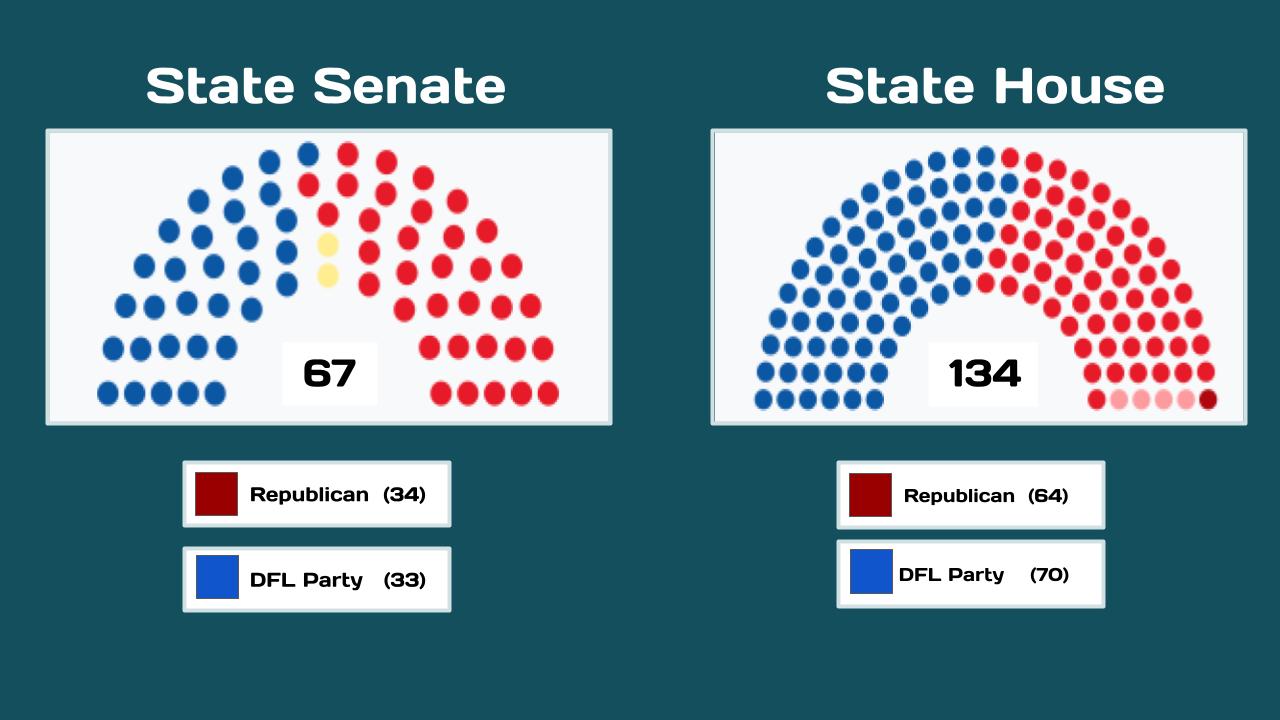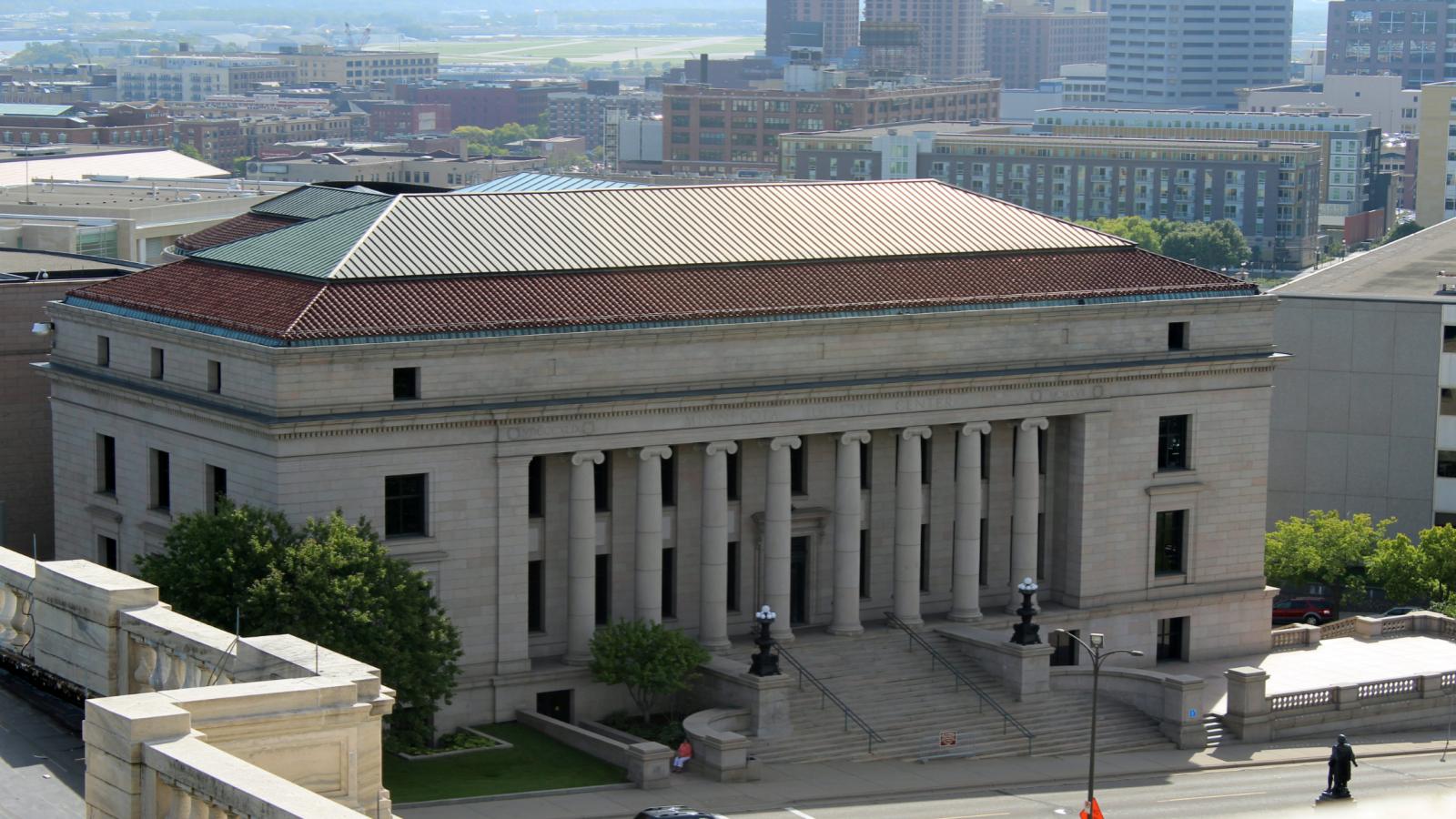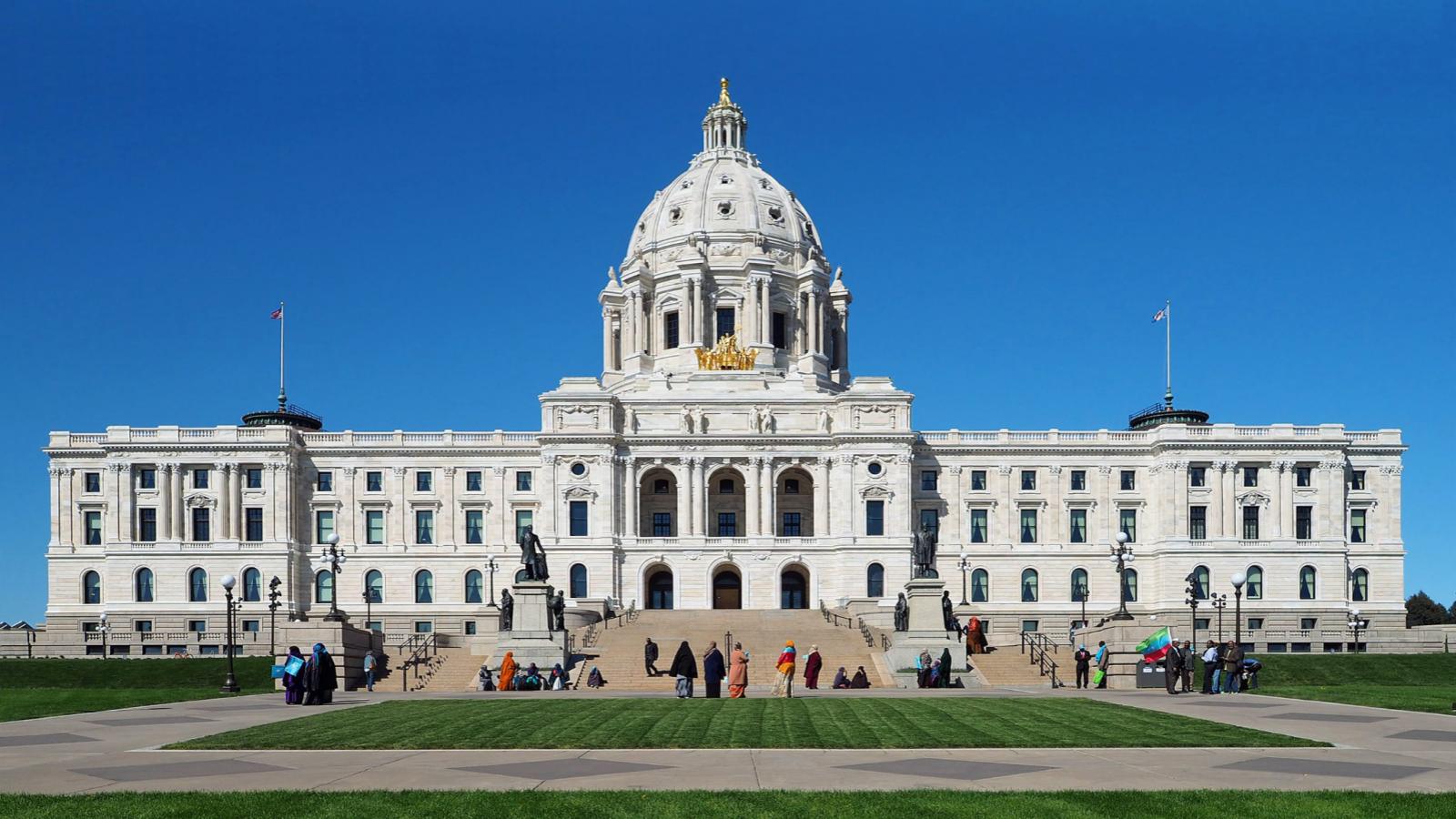The Minnesota Legislature is the bicameral legislature of the U.S. state of Minnesota consisting of two houses: the Senate and the House of Representatives. Senators are elected from 67 single-member districts. In order to account for decennial redistricting, members run for one two-year term and two four-year terms each decade. They are elected for four-year terms in years ending in 2 and 6, and for two-year terms in years ending in 0. Representatives are elected for two-year terms from 134 single-member districts formed by dividing the 67 senate districts in half. It is the only state legislature in the country to be split with the Republicans controlling the state senate and the democrats controlling the state house.
Both houses of the Legislature meet between January and the first Monday following the third Saturday in May each year, not to exceed 120 legislative days per biennium. Floor sessions are held in the Minnesota State Capitol in Saint Paul.
OnAir Post: MN Legislature




